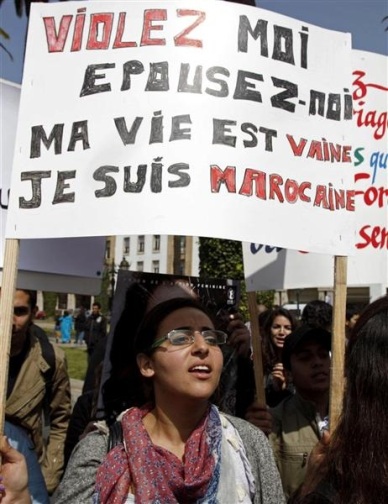“How can society achieve progress, while women, who represent half the nation, see their rights violated and suffer, as a result, of injustice, violence and marginalization?”
(King Muhammad VI, 2003)
Morocco’s human rights development in the last eleven years (since 1999 when the King Muhammad VI succeeded his father Hassan II on the throne) were exceptional in the middle Eastern and North African region and in the Islamic world, especially regarding women’s rights. Women’s rights in Morocco developed much in the past decade.
The change came slowly, from the beginnings there was pressure on the government to regulate family relations, which led to the creation of the Personal Status Code, the Moudawana in 1957, which, although gave a framework to family relations and women’s rights, was far from egalitarian. From the 1980s, especially after the emergence of leftist parties and human and women’s rights organisations, the pressure was further growing, leading to modest reforms in 1992-93 by king Hassan II. This was, however, far from satisfactory for the masses asking for their rights. In 1999, however, the rule of Hassan II came to an end and his son, Muhammad VI succeeded him on the throne. In his speech of accession to throne, he made it clear that his rule will be different from that of his father.
To show this statement in practice, he announced the amnesty of political prisoners, including Abdessalam Yassine, the leader of the illegal Jama’at al-Adl wal-Ihsan Islamist organisation. He also initiated reforms in women’s status, namely the Action Plan for the Integration of Women in Development, that raised serious objections from the religious population. The 2003 Casablanca terror attack gave the final kick for the reforms, as it weakened the Islamist opposition, that, after the attacks, took on a much more conciliatory attitude and showed allegiance to the king, and became a supporter of the reforms, enacted in 2004.
The changes did not only occur in the family law but also in the political and religious rights of Moroccan women. After the long struggle, a new civil and family code was introduced. This new Moudawana gives women unprecedented rights in the family, politics and more rights in religion as well. These developments have the very important characteristic of being satisfactory to every involved group: the Islamists may be content of the compromises it achieved, and women are also happy with their new rights. It also enables Morocco to present itself as a modern state, giving women and children their rights and granting them protection that is unique to Morocco in the Muslim world.
As for marriage, the new code came to raise the legal age of marriage for girls to eighteen, but left the possibility for underage marriage with the consent of both parties, the judge and the tutor of the wife-to-be. This law also enabled women to decide upon marriage alone, without a wali, which is probably one of the most controversial decisions among ordinary Moroccans, women and men alike.

The new Moudawana also gave women the possibility to demand the divorce, a right that was previously reserved for men only. The new code allows women to keep the right of custody over their children if they remarry and it also declares that in every case, the best interests of the child should be considered. The Moudawana declares that in case of divorce, the house belongs to the one who gets the right of custody over the children, which, in the light of women’s right to gain the right of custody, decreases the number of women in the streets.
Polygamy is also restricted in the new family law, as it declares women’s rights to make the marriage conditional upon the premise of excluding polygamy.
Although this new personal status code grants women most of the rights that women have in democratic western societies, there are still some challenges to come over. Such challenge is the inability or the judges to fully enforce the new law, or in case of mediation, to correctly conduct it.






